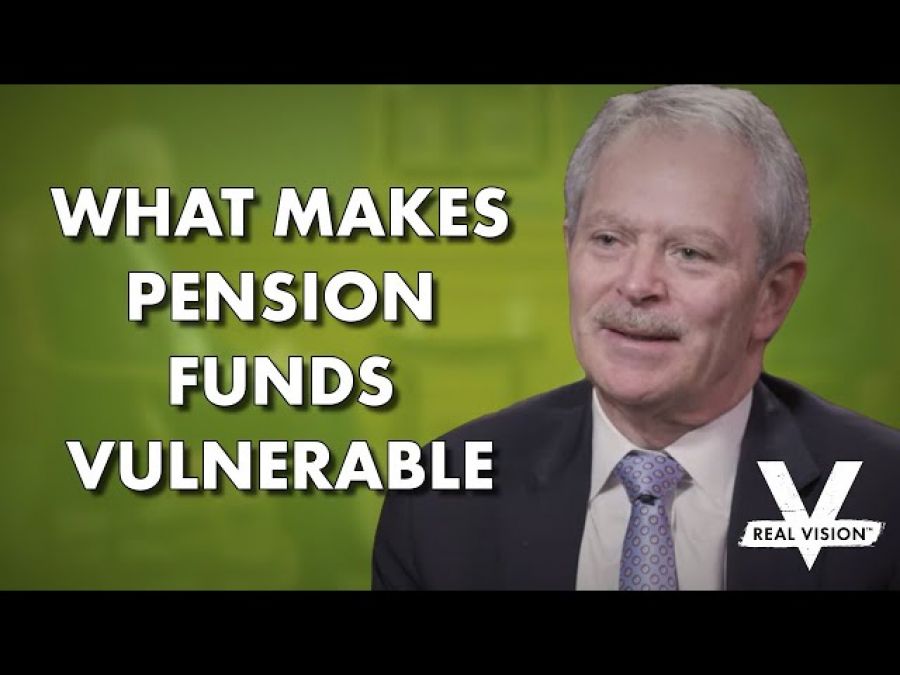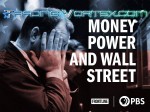Video Transcription:
The Point of No Return for Pension Funds (w/ Jim Keohane)
ED HARRISON: When you think about the fact that these macro risks are out there, and the markets are still going, you could have a very sharp drop in the market. And if that were to occur, it goes to a concept that I think that you were talking about in terms of wrong way risk. Talk to me about what that means in terms of pension companies-- how they manage those downturns. JIM KEOHANE: So you mentioned the wrong way risk. The wrong way risk-- in other words, if the market goes down, you're going to do worse. So I would describe the risk profile of a pension plan as a nonlinear risk utility. What I mean by that is that a loss is way more damaging than a gain is beneficial. So if I gained 25%, it's not as beneficial as a 25% loss is damaging. And so why that's true-- so if you go back to 2008, some funds did have 25% losses. And so today, if we we're fully funded, we have 100% of the assets we needed, we need during about 6% to keep the thing on an even keel. So if we lose 25%, we now only any of 75% of the assets to produce that same level of income, so we need to earn 8% on those assets. And plus, because we now only have 75% of the assets we had before, we need to earn 33% to get back to where we were. So it's a bit of a slippery slope. And we've done modeling, and you can see that there's a certain tipping point you get to that you can't recover from it. So this is an implicit assumption in the way pension funds are run that if you are this long term time horizon, equity market risk can get absorbed and you're going to be fine. Our modeling choice-- you can go these periods where you get to a position where you can't recover from it. So I think there's a tipping point which is probably somewhere between 60%, 70% funded that returns you need to earn to get back to a fully funded status are impossible to actually achieve. So what you want to do is make sure that you never get on that slippery slope. And so that's why we've constructed our portfolio the way we've constructed it. So we're prepared to give a work give away some of the upside to keep us all from having that downside. And so it just effectively reduces our volatility and never is going to get us in that position where we're not going to be able to recover from a big downturn. And we're very conscious of that all the time. ED HARRISON: Right. And since we're talking about asset allocation in general-- that's where I started on this-- you told me that you actually have a decent amount of real estate in Toronto-- also in DC, where I'm based. Asset allocation-wise, what's the breakdown? You talked about 60-40 when you first came to the business. How would you break that down today in terms of alternative assets like that-- real estate private, investment, and things of that nature? JIM KEOHANE: Yeah so we have about 15% of our assets in real estate. And real estate, because they're a matching asset, because that has very good inflation hedging characteristics. And plus, it produces good income. We have about 15% in private assets, private equity, private credit. And we have about 15% in public equities. And the rest of it is in long term fixed income and real return bonds, which is it'd be equivalent to tips. We do on some tips. And so we have an inflation hedging asset, which is real estate and real return bonds. So most of our-- I should start over. So we've actually broken our portfolio down two components, which is a inflation hedging portfolio and a return seeking portfolio. So inflation hedging portfolio contains real estate, real return bonds, and long term interest rate bonds-- all governments. And we also have a small infrastructure component right now we just started. So again, that portfolio would probably produce in today's world about a 3% to 4% return. We need to earn 6%. So we have another 200 basis points from other activities. So that's why we overlay on top of that, exposure to equities using equity index futures swaps for options. We have exposure to credit using credit default swaps. So we saw credit protection on the investment grade index to get our credit exposure. And then we have a whole suite of absolute return strategies. And so that combination creates our overall estimate. So it's hard to describe or perform in a traditional way. ED HARRISON: Right, yes. JIM KEOHANE: But it's because it adds up to more than 100. But that's the structure of the portfolio. ED HARRISON: Well, as you were talking, you were talking about inflation, and I was thinking about the drop in market. One of the things in terms of the underfunded position of pensions that I found interesting was this concept that in the board managed structure that you have, there is the opportunity to deal with COLA in a way that gives you some catch up. And that's also another, I would call, right way risk type of structure. Can you explain how that works? JIM KEOHANE: Sure. So our board intends to pay inflation protection on pension payments. So our objective is to try and pay people 100% of CPI every year as an adjustment on the pension. And we will do that most of time. But the board-- so it's ad hoc. So in other words, the board will only give you that if we have sufficient funding to do so. If we got into a period where we became underfunded-- our modeling shows that if took that to from 100% of CPI to zero, that would improve our funding position by up to 20%. So that's a big lever that really allows you to go through a lot of different downturns and manage through risk. And again, we model these things-- most of the time, if that's all you would need to deal with in order to keep our finance funded status sufficient to meet the obligations. So it's a very powerful lever. And a lot of the funds here have that. And the trade off I would tell members on that one is that our price is one of the lowest of all the major funds here. So members pay roughly about 8% of their compensation or their salaries for the plan. And we can keep it affordable like that because of features like that. The alternative is we can give you a guaranteed call, where we'd have to charge at 12. So if you give people that trade off, the risk is to you is that when you're retired, there may be periods where we have to lower your inflation protection. But when we get sufficient funding, we'll give it back to you. And we've done that a couple of times. We've never taken it to zero, but we've taken it to 75% CPI a couple of times. And once we had sufficient funding, we brought it back to 100% and actually made people hold back to where they would've been. So it's a very effective tool to enable us to manage through difficult periods and keep the fun going. So again, it surprises people when you find out how effective a tool that actually is. ED HARRISON: When you mentioned that example, by the way, it reminded me of the advocacy part that you have on the website, which breaks down into those five components. It talks about how much money you could save-- how much money you could put in if you were to put it into a HOOPP versus if you did it on your own. And the number that I saw was something like $900,000 extra that you would have to save on your own. Walk me through that math, because I think that's pretty extraordinary. JIM KEOHANE: Yeah, so what we did is we created a theoretical pensioner, and because we're a health care organization, it was a nurse. And so our nurse, Sophia, we assumed that she started her career at age 25 earning about $40,000 a year, and got the usual escalation through a career. And that she retired at, say, 65, and wanted to replace roughly, 7% of our income, which is what our plan does. And so if you go through what you need to do-- so that's the way we looked at the five factor savings patterns-- investment acumen, governance alignment, management of the accumulation phase, reassuring and I'm missing one. ED HARRISON: Savings fees and costs. JIM KEOHANE: Fees and costs, yeah. So when you look at all those things-- and the two biggest ones are actually fees and costs and management of longevity risk-- those things result in, if you were an individual, you'd have to put aside about-- a correct number, I think, is about $1.2 million over your career to actually achieve that outcome for that particular individual, which, by the way, is almost impossible, given the income level. But then if you did it through HOOPP, you'd have to put aside about $320,000, I think, is the right number. So it's about a $900,000 on a difference between what it would cost you to produce exactly the same thing outcome on your own that you could produce with an approved plan like HOOPP. So it's a much more efficient way to actually achieve the same outcome. ED HARRISON: And you guys-- from my perspective, you're totally underselling that differential, because you say $900,000, but you don't show the actual numbers. 320 versus 1.2 is, like, a ridiculous transformation. I mean, you're talking about almost four times as much that you would have to put away in order to replicate that on your own. JIM KEOHANE: Yeah. And the reality is most people just don't have that kind of money to do that. So it's not even a matter of whether you if you wanted to, you probably don't have sufficient funds to actually do that. But that's the equivalent number.








